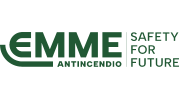FUEL
The fuel must be in a gaseous state in order to react together with the combustive agent (oxygen), which is in a gaseous state as well. Solid and liquid fuels need to evaporate or sublimate to be able to start the combustion.
Solid fuels can be divided into '98% noncombustible', 'difficult to ignite', 'normally combustible' and 'easily ignited'. Difficult-to-ignite materials burn only with a constant heat source, while combustible and easily-ignited materials carry on the combustion process by autocatalysis. The difference between normally-combustible and easily-ignited materials resides in the minimum ignition energy (MIE) needed.
Liquid fuels requiring a low flammability temperature are called volatile. Flammable liquids can even ignite without flames, as they easily reach the autoignition temperature. Those liquids whose flammability temperature is below 21°C can generate explosive substances. Acetone, petrol, benzene, alcohol, ether are instances of this kind of fuel. Liquids whose flammability temperature is between 21°C and 65°C are called flammable. In this category we can find petroleum, white spirit, chlorothene. A liquid is called combustible if its flammability point exceeds 65°C. Among these, naphtha, paint, combustible oils, animal and vegetable lubricant oils and fats.
Gaseous fuels do not need a flammability temperature, as it is already possible for them to blend with oxygen.
In an enclosed space, gases distribute in layers with growing density according to their weight, blending with the oxygen present in that space in different proportions. The flammability limits define that zone in which the blend of fuel and oxygen is such to allow the combustion. The zone inside the flammability limits in which the proportion between gas and oxygen allows a violent combustion is called detonating mixture. Gases are divided into flammable, nonflammable, reactive and toxic. Flammable gases can burn in a blend with oxygen at a given concentration. In no case nonflammable gases burn in a blend with oxygen. Reactive gases are those gases which, combined with other substances, can originate reactions other than combustion. Toxic gases are simply those gases that are dangerous to human health once they are released in air. Sometimes, gases are divided into combustible gases, that are used as fuel when mixed with air, industrial gases, that are any kind of gas used in industrial processes, and medical gases.
The density of gases as light as hydrogen and methane is lower than the density of atmosphere, therefore when they are released they tend to go upwards, while gases as heavy as LPG and acetylene are denser than air and tend to layer downwards.
COMBUSTIVE AGENT
Generally speaking, as the combustion is an oxidising process, the combustive agent is oxygen, that can be found in the atmosphere of Earth at a concentration of 21%. Peroxides and explosives are an exception to this rule, because they contain oxygen enough to start a combustion process even without air.


